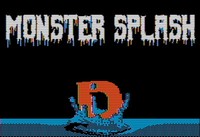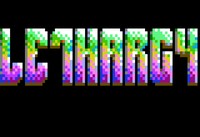Apple II

Apple II was the successor to the Apple 1 on which it was largely based. It was the very first commercial success of the Apple Computer Company.
Because Steve Wozniak wanted to demonstrate his Breakout game with the new Apple II, he decided to add colour, sound and minimum paddle support to the Apple 1's heir.
The Apple II came with 4 KB RAM, but it was possible to add 4 KB or 16 KB RAM chips. Thus, the system could have memory in the following sizes: 4K, 8K, 12K,16K, 20K, 24K, 32K, 36K, or a full 48K. This was one of the strong points of the Apple II: from the beginning, it was designed with expansion in mind. The 8 expansion slots were further proof of that - users could expand their system easily, just by plugging cards into the slots.
The ROM included the monitor, a 6502 disassembler, 'Sweet 16' a 16-bit CPU emulator and the Integer Basic written by Wozniak in machine language, assembled by hand on paper! Not having to load a language from tape or disk to start programing was also a significant advantage over competitors. Even the innovative plastic case proved to be an important feature to attract customers.
Just a few months after the Apple II presentation at the First West Coast Computer Fair in April 1977, Apple received about three hundred orders for the Apple II, over a hundred more than the total number of Apple-1's sold.
The Apple II was followed in 1979 by the Apple II+, which brought some enhancements.
(Note: Description used with courtesy of http://www.old-computers.com)
Emulators for this platform include;
Virtual II for macOS.
Recent releases:

|
Desire | Nov 2025 | |

|
Lethargy | Sep 2025 | |

|
Marquee Design | Jul 2025 | |

|
Desire and Otomata Labs | May 2025 | |

|
Deater / Desire | May 2025 | |

|
Brutal Deluxe | May 2025 | |

|
Doclands / The Overlanders | Apr 2025 | |

|
Brutal Deluxe | Apr 2025 | |

|
kgjenkins | Feb 2025 | |

|
Deater / Desire | Feb 2025 | |

|
Deater / Desire | Feb 2025 | |

|
Deater / Desire | Feb 2025 | |

|
Deater / Desire | Feb 2025 | |

|
kgjenkins | Feb 2025 | |

|
Desire | Nov 2024 | |

|
French Touch | Nov 2024 | |

|
Brutal Deluxe | Nov 2024 | |

|
Brutal Deluxe | Nov 2024 | |

|
Jerry V. | Aug 2024 | |

|
Jabberwock | Aug 2024 | |

|
Crazy Ignat | Aug 2024 | |

|
Marquee Design | Jul 2024 | |
|
|
VMW Software Production | May 2024 | |

|
French Touch | May 2024 | |

|
Deater / Desire | May 2024 | |

|
Deater / Desire | May 2024 | |
|
|
Deater / Desire | Feb 2024 | |

|
kgjenkins | Feb 2024 | |

|
Deater / Desire | Feb 2024 | |

|
Deater / Desire | Feb 2024 |